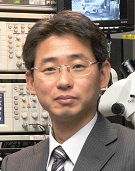A01Basic technology for dynamics and control of neural circuit
Kazuto Kobayashi (Fukushima Medical University) (Representative)

“Technology for pathway-specific manipulation and control of neural circuit”
Our research group will develop the novel technology for genetic manipulation and control of neural circuit functions in the central nervous system. In particular, the highly efficient/neuron-specific retrograde gene transfer vector systems are useful for pathway-specific manipulation of the circuit functions in a wide range of brain science fields. In this project, our genetic technology will be extended further to control the activity of selective neuronal types in the circuit and applied for the study of neural mechanisms underlying the functional shift of the cortico-basal ganglia circuit during processes of operant learning…
Hirotaka Onoe (National Institute for Physiological Sciences)

Noninvasive imaging technologies for measuring neural circuit activity
The overall goal of our team is to contribute to understanding pathological processes in the nervous system caused by changes in functional structures and to improve diagnostic and treatment strategies by using Positron Emission Tomography (PET) and Magnetic Resonance Imaging (MRI). To accomplish our goal, we aim to develop three methods: (1) dynamic imaging for complex biological and cellular functions in the living state, (2) clarification of the spatio-temporal processes…
Yasuharu Koike (Tokyo Institute of Technology)

“Technology for computational modeling that connects behavior and brain neural activity”
Musculoskeletal system model is the basis of the body movement, and is intended to connect the behavior and neural activity. In order to understand the the functional shift of brain neural circuit for behavioral adaptation, this model plays crucial role for analyzing the behavioral and neural activities through the dynamics of the body. In this study, a mathematical model analysis technique is applied to learning process, including the recovery from the damage of neural circuit…






